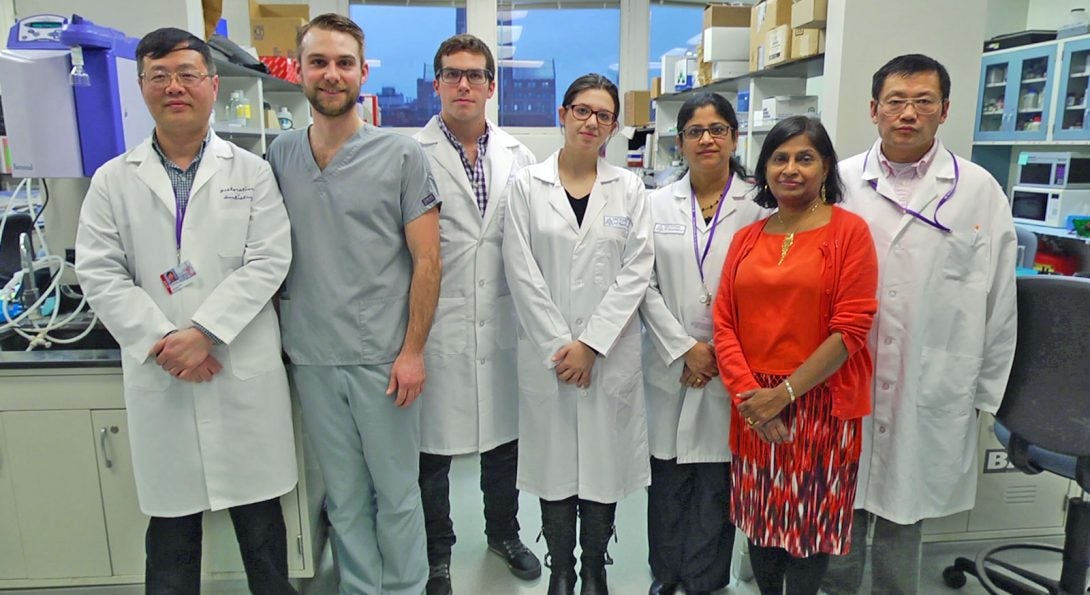Dr. Anne George Will have 23 Years of NIH Research Funding

Introduction
The National Institute of Dental Research of the National Institutes of Health has decided to fund the research of Dr. Anne George, Allan G. Brodie Endowed Professor in the Brodie Tooth Development Genetics and Regenerative Medicine Research Laboratory and Professor of Oral Biology, University of Illinois at Chicago College of Dentistry, for another five years. This will result in 23 straight years of NIDCR funding of Dr. George’s research.
Finding new ways to fill tooth cavities
Anne George’s research could one day lead to a new way of filling oral caries. Her research is on the role of the gene Dentin Matrix Protein 1 (DMP1) in bone metabolism. Dr. George is studying how proteins can regenerate dentin, a calcified tissue of the body that, along with enamel, cementum and pulp, is one of the four major components of teeth. She has been instrumental in cloning the dentin matrix protein genes (DMPs) from the mineralized dentin matrix of animal models. Dentists today traditionally use amalgam or other artificial compounds. Instead, George said, dentists can fill the cavity with the dentin matrix protein 1, which will bind calcium. After covering the site with polymer resin, new tissue would grow within a few weeks, allowing the dentin to regenerate. The dentin matrix protein 1 gene cannot only regenerate dentin, but it can also be used as a signaling molecule that can convert stem cells into osteoblasts and help to repair bone fractures at a faster rate.
Dr. George is also interested in the science of biomimetics and tissue engineering.
 Areas of Expertise
Areas of Expertise
Research Focus: Regenerative Science
- Biomaterials
- Bio-engineering
- Stem Cell Biology
- Biomimetics
In 1992, Dr. George and her laboratory team cloned DMP1 and published a paper on that breakthrough. The paper contained the cDNA sequence and the deduced amino acid composition for this gene.
“We have been trying to identify the function for this protein, which is predominantly present in bone and teeth,” Dr. George said. “Besides being involved in the mineralization function, we now know it plays an important role in bone metabolism. Therefore, the current proposal seeks to further clarify this role, along with identifying its interacting partners. “Since DMP1 is a calcium-binding protein, we intend to identify how it regulates this function and identify its interacting partners and their role in mineralization,” she added.
Her NIDCR grant began in 1996 and now will run through April 2019. The funding granted in her latest extension “is a total of $399,500 each year for the next five years,” Dr. George said.
“Nature uses simple proteins like DMP1 with multifunctional capabilities to produce large calcified structures such as our skeleton and teeth,” Dr. George explained.
“The way nature regulates their function is mind-boggling. Deciphering a little bit of their function by my lab members is gratifying. I am amazed from what we learn in the lab regarding the function of this protein with simple experiments,” she concluded.
George has been instrumental in cloning the dentin matrix protein genes from animal models. Her studies are directly aimed at dentin mineralization because of its uniformity and metabolic simplicity relative to bone.
Dentists today traditionally use amalgam or other artificial compounds to fill cavities. Instead, Dr. George said, dentists can fill the cavity with the dentin matrix protein 1, which binds calcium. After covering the site with polymer resin, new tissue would grow within a few weeks, allowing the dentin to regenerate.
Dr. Anne George received 2013 The Researcher of the Year award, for more information, please see http://news.uic.edu/finding-new-ways-to-fill-cavities.
In the News
Grant allows UIC oral biologists to further explore DMP1
October 16, 2014
Stories
Honorary degrees ‘deeply meaningful’ for recipients, university
November 3, 2015
Finding new ways to fill tooth cavities
February 25, 2014